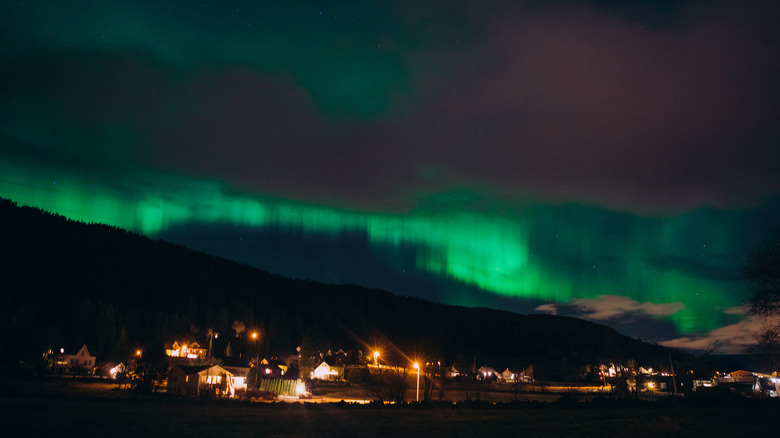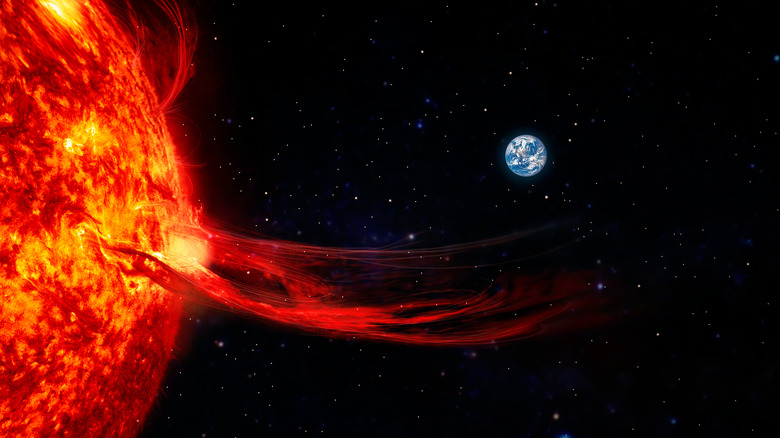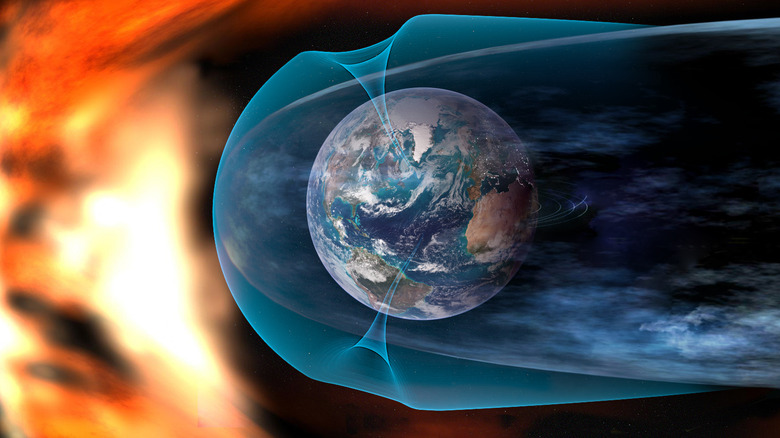
Anastasiia Shavshyna/Getty Images
A geomagnetic storm recently caused a massive disturbance to the Earth’s atmosphere, notably giving people the chance to be able to see the aurora borealis, or northern lights, much further south than is typically viable. NASA called it «possibly one of the strongest displays of auroras on record in the past 500 years.» It’s not uncommon for people to go their entire lives without ever thinking twice about this strange cosmic phenomenon, but the recent event has brought it to the fore. Now there are a lot of people who might be interested in learning just what a geomagnetic storm is, and whether or not they might be dangerous.
It’s important to be wary of misinformation though, and check that the information you consume comes from a scientifically verified source. This is why all of our information comes directly from trusted government agencies dedicated to the research and study of these phenomena. With that in mind, to best understand what a geomagnetic storm is, its wise to first know a little bit about solar wind and how solar storms can impact the Earth.
What is a geomagnetic storm?

Lia Koltyrina/Shutterstock
Our sun has a very strong gravitational pull, but it burns at such a high heat that its gravity isn’t able to retain 100% of its mass. Gasses are ejected off the star’s corona at such incredibly high speeds that they break free from its gravitational pull and manage to travel great distances through space. «Solar wind streams off of the Sun in all directions at speeds of about 400 km/s (about 1 million miles per hour),» NASA states. «Although we understand why this happens we do not understand the details about how and where the coronal gases are accelerated to these high velocities.» This isn’t an even distribution of gasses either. There are different masses of solar wind that travel at different speeds and in different directions.
A geomagnetic storm happens when solar winds strike the Earth’s atmosphere in a very particular way. The Space Weather Prediction Center arm of the National Oceanic and Atmospheric Administration (NOAA) defines it as, «a major disturbance of Earth’s magnetosphere that occurs when there is a very efficient exchange of energy from the solar wind into the space environment surrounding Earth.» It then goes on to state that, «These storms result from variations in the solar wind that produce major changes in the currents, plasmas, and fields in Earth’s magnetosphere.» It is these impacts on the magnetosphere that result in phenomena like the aurora borealis, with varying intensity making the aurora brighter and increasing its auroral zone.
Are geomagnetic storms hazardous?

Elen11/Getty Images
So, now that you know what a geomagnetic storm is, you probably want to know whether you need to break out the extra high SPF sunscreen the next time one occurs. The answer is a bit complicated but the short version is, no, not particularly.
Our planet’s atmosphere and magnetic field protects humans from the brunt of the radioactive danger that solar winds could cause. Furthermore, disruptions to the magnetic field don’t have any negative consequences to our health. «The Earth’s magnetic field does not directly affect human health. Humans evolved to live on this planet,» says the USGS. «High altitude pilots and astronauts can experience higher levels of radiation during magnetic storms, but the hazard is due to the radiation, not the magnetic field itself.»
Most of the hazards associated with geomagnetic storms come down to the way they affect our technology. The storms can disrupt long-range radio communication and GPS, increase the drag on orbiting satellites, fry solar electronics, and even cause power surges down on the Earth’s surface. Several newly deployed Starlink satellites were destroyed this way during a geomagnetic storm back in 2022. Some have even theorized that a large enough explosion from the sun could end the digital age. These disruptions can certainly cause hazardous conditions for humans indirectly, but you probably don’t need to worry about any harm from the storm itself so long as you have your feet on the ground.